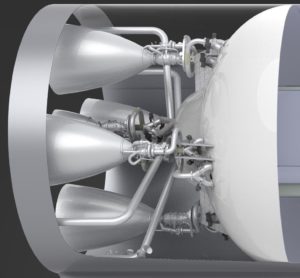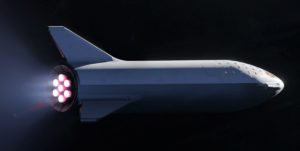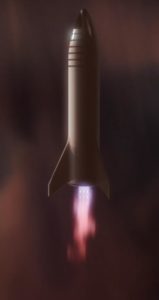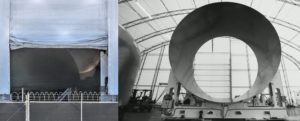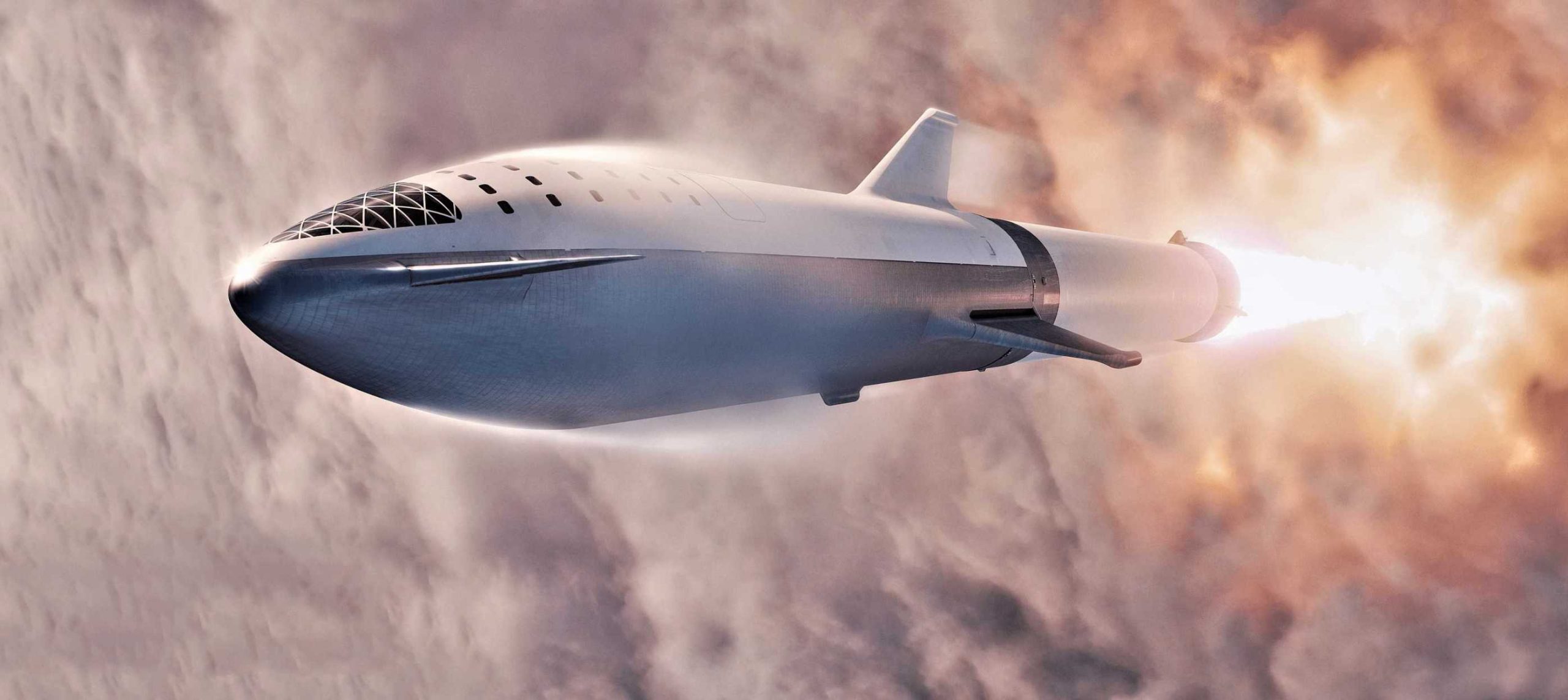
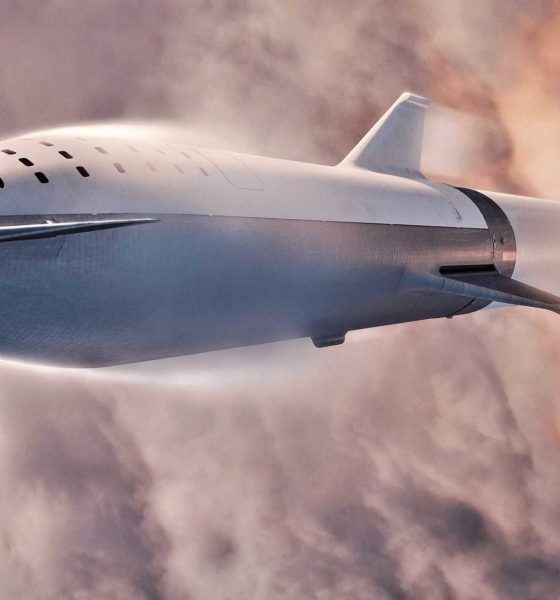
SpaceX
SpaceX CEO Elon Musk teases new Starship photos and “heavy metal” BFR
Drawn in by Teslarati photographer Pauline Acalin’s most recent photos of Port of LA Falcon 9 recovery operations SpaceX is in the midst of, CEO Elon Musk took to Twitter on December 8th to discuss titanium grid fins and – more importantly – answer a miscellaneous handful of questions about the status of BFR’s development.
Marked lately by rapid-fire, wide-reaching changes to BFR’s general structural composite, Musk at long last confirmed what some suspected – now known as Starship/Super Heavy, the BFR program has officially moved away from carbon fiber composites as the primary material of choice for the rocket’s structure and propellant tanks, instead pivoting to what Musk described as a “fairly heavy metal”.
But cool pics of the demo Starship that will fly suborbital hops coming in ~4 weeks
— Elon Musk (@elonmusk) December 9, 2018
Aside from his confirmation that SpaceX has moved to metallic tanks and structures on BFR’s spaceship upper stage and booster (Starship/Super Heavy), Musk further stated that SpaceX was planning to release new photos of a prototype Starship – currently under construction for full-scale hop-tests in South Texas – as few as four weeks from today.
- BFR 2017’s spaceship engine section. (SpaceX)
- A September 2018 render of Starship (then BFS) shows one of the vehicle’s two hinged wings/fins/legs. (SpaceX)
- A BFS attempts a Mars landing in this official updated render. (SpaceX)
- SpaceX’s first BFR spaceship prototype is coming together piece by piece. (SpaceX/Pauline Acalin)
It’s hard to say what those photos will show, but suffice it say that Musk would not tease the release of BFR-related photos on Twitter if they were not expected to be at least a touch spectacular. Per the CEO’s brief comments on hardware at his September 2018 introduction to Dear Moon, the most likely candidates for those photos would be a Starship (BFS) thrust structure in the middle of Raptor integration and additional progress being made on the ship prototype’s structures, perhaps including completed metallic tanks and some of its aerodynamic fins and wings.
Question: “Is Super Heavy in development at all, or just starship right now?”
Elon Musk: “Both, but demo Starship is being built now, whereas Super Heavy hardware will start getting built in spring”
While BFR’s official development schedule has essentially been thrown up in the air by these recent design changes, both Musk and COO/President Gwynne Shotwell stated earlier this year that they expected spaceship (now Starship) hop tests to begin no earlier than (NET) the end of 2019 – Q4 or December, in other words. SpaceX just recently began a major ramp in activity at its South Texas test and launch facilities, beginning construction on several partially prepared acres that were long ago predicted to support a wholly private Falcon 9/Falcon Heavy launch pad.
SpaceX ships another huge propellant tank to South Texas BFR test sitehttps://t.co/4L7f74gwg3 pic.twitter.com/KnHXOTCfAR
— TESLARATI (@Teslarati) October 24, 2018
These new plans to release official BFR photos simply adds to the ever-growing pile of major SpaceX events that could potentially occur in Q 2019, including Crew Dragon’s first uncrewed trip to orbit and the International Space Station (ISS), Falcon Heavy’s second launch ever, and the launch of several additional prototype Starlink satellites, among many other possibilities.
2019 is gonna be wild. Stay tuned for additional updates on SpaceX’s future plans and Musk’s spontaneous Twitter Q&As as the new year nears.
For prompt updates, on-the-ground perspectives, and unique glimpses of SpaceX’s rocket recovery fleet check out our brand new LaunchPad and LandingZone newsletters!

Elon Musk
SpaceX’s next project will produce Starships at a level that sounds impossible
1,000 rockets per year is an insane number, especially considering Starship’s sheer size.
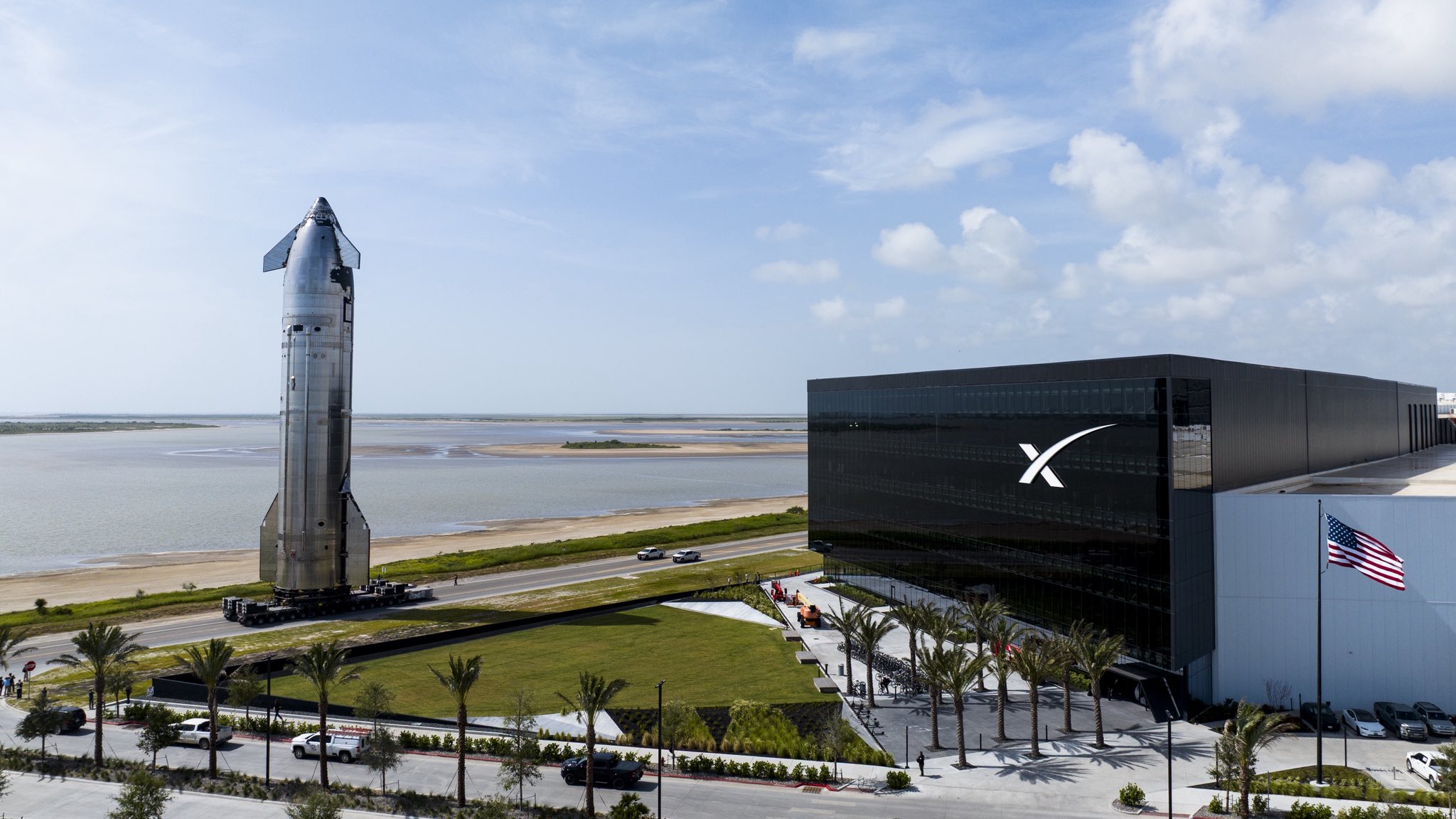
Elon Musk has revealed bold plans for SpaceX’s newest Starbase facility in Texas, predicting it will become a birthplace for “so many spaceships.” The upcoming “Gigabay,” a massive $250 million production hub in Starbase, Texas, is designed to manufacture up to 1,000 Starship rockets per year.
That’s an insane number of rockets for a single facility, especially considering Starship’s sheer size.
One of the world’s largest industrial structures
SpaceX’s Gigabay is expected to stand roughly 380 feet tall and enclose 46.5 million cubic feet of interior space, making it one of the largest industrial structures to date. The facility will feature 24 dedicated work cells for assembling and refurbishing Starship and Super Heavy vehicles, complete with heavy-duty cranes capable of lifting up to 400 U.S. tons, as noted in a Times of India report.
Construction crews have already placed four tower cranes on-site, with completion targeted for December 2026. Once operational, the Gigabay is expected to boost SpaceX’s launch cadence dramatically, as it would be able to build up to 1,000 reusable Starships per year, as noted in a report from the Dallas Express. Musk stated that the Gigabay will be “one of the biggest structures in the world” and hinted that it represents a major leap in Starbase’s evolution from test site to full-scale production hub.
A key step toward Mars and beyond
Starship is SpaceX’s heavy-lift rocket system, and it remains a key part of Elon Musk’s vision of a multiplanetary future. The vehicle can carry 100–150 tonnes to low Earth orbit and up to 250 tonnes in expendable mode. With several successful flights to date, including a perfect 11th test flight, the Starship program continues to refine its reusable launch system ahead of crewed lunar missions under NASA’s Artemis initiative.
Starship is unlike any other spacecraft that has been produced in the past. As per Elon Musk, Starship is a “planet-colonizer” class rocket, as the magnitude of such a task “makes other space transport task trivial.” Considering Starship’s capabilities, it could indeed become the spacecraft that makes a Moon or Mars base feasible.
Cybertruck
Tesla Cybertruck fleet takes over at SpaceX’s Starbase
Interestingly, the Cybertruck uses the same exterior, a stainless steel alloy, as SpaceX rockets. This synergy between the two companies and their very different products shows a very unified mentality between Musk companies.
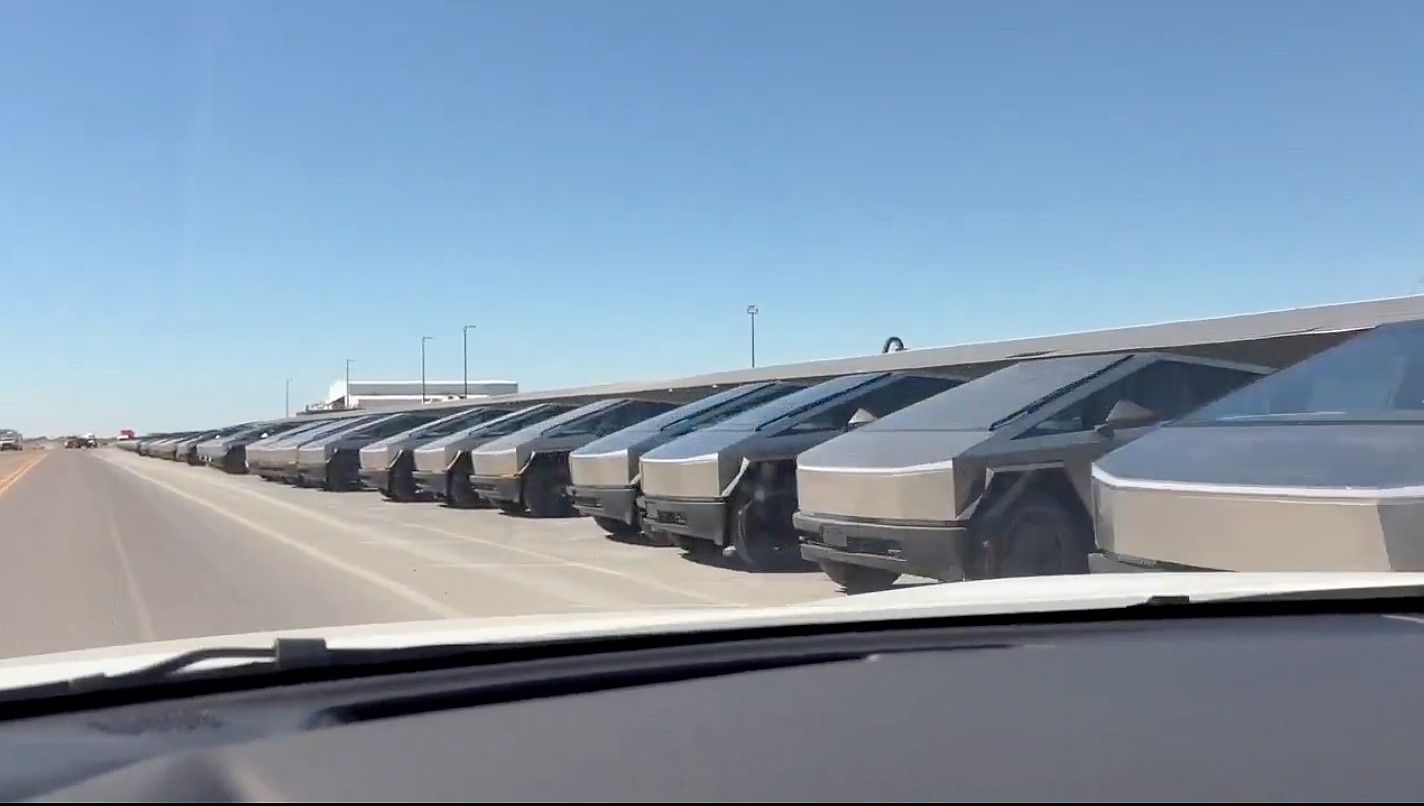
Tesla Cybertrucks have taken over at SpaceX’s Starbase facility in Texas, as hundreds of the all-electric pickup trucks were spotted late last week rounding out a massive fleet of vehicles.
The Cybertruck fleet is geared toward replacing gas vehicles that are used at Starbase for everyday operations. The only surprise about this is that it was not done sooner:
Was just visiting. pic.twitter.com/5Q9wPPaeuH
— Derek Li (@derek1ee) October 31, 2025
Deliveries have been going on for a few weeks, as Cybertrucks have made their way across the state of Texas from Austin to Starbase so they could be included in SpaceX’s fleet of vehicles at the facility.
Interestingly, the Cybertruck uses the same exterior, a stainless steel alloy, as SpaceX rockets. This synergy between the two companies and their very different products shows a very unified mentality between Musk companies.
However, there are some other perspectives to consider as SpaceX is utilizing such a massive fleet of Cybertrucks. Some media outlets (unsurprisingly) are seeing this as a move of weakness by both Tesla and SpaceX, as the aerospace company is, in a sense, “bailing out” lagging sales for the all-electric pickup.
It’s no secret that Tesla has struggled with the Cybertruck this year, and deliveries have been underwhelming in the sense that the company was anticipating between 1 million and 2 million orders for the vehicle before it was widely produced.
A lot of things changed with the Cybertruck between its 2019 unveiling and 2023 initial deliveries, most notably, price.
The price of the Cybertruck swelled significantly and priced out many of those who had pre-ordered it. Some have weighed the option of whether this purchase was a way to get rid of sitting inventory.
However, it seems more logical to consider the fact that SpaceX was likely always going to transition to Teslas for its fleet, especially at Starship, at some point.
It doesn’t seem out of the question that one Musk company would utilize another Musk company’s products, especially considering the Cybertruck has been teased as the vehicle that would be present on Mars.
News
SpaceX successfully launches 100th Starlink mission of 2025
With 100 Starlink missions completed for 2025, space enthusiasts have noted that SpaceX has successfully launched 2,554 Starlink satellites so far this year.
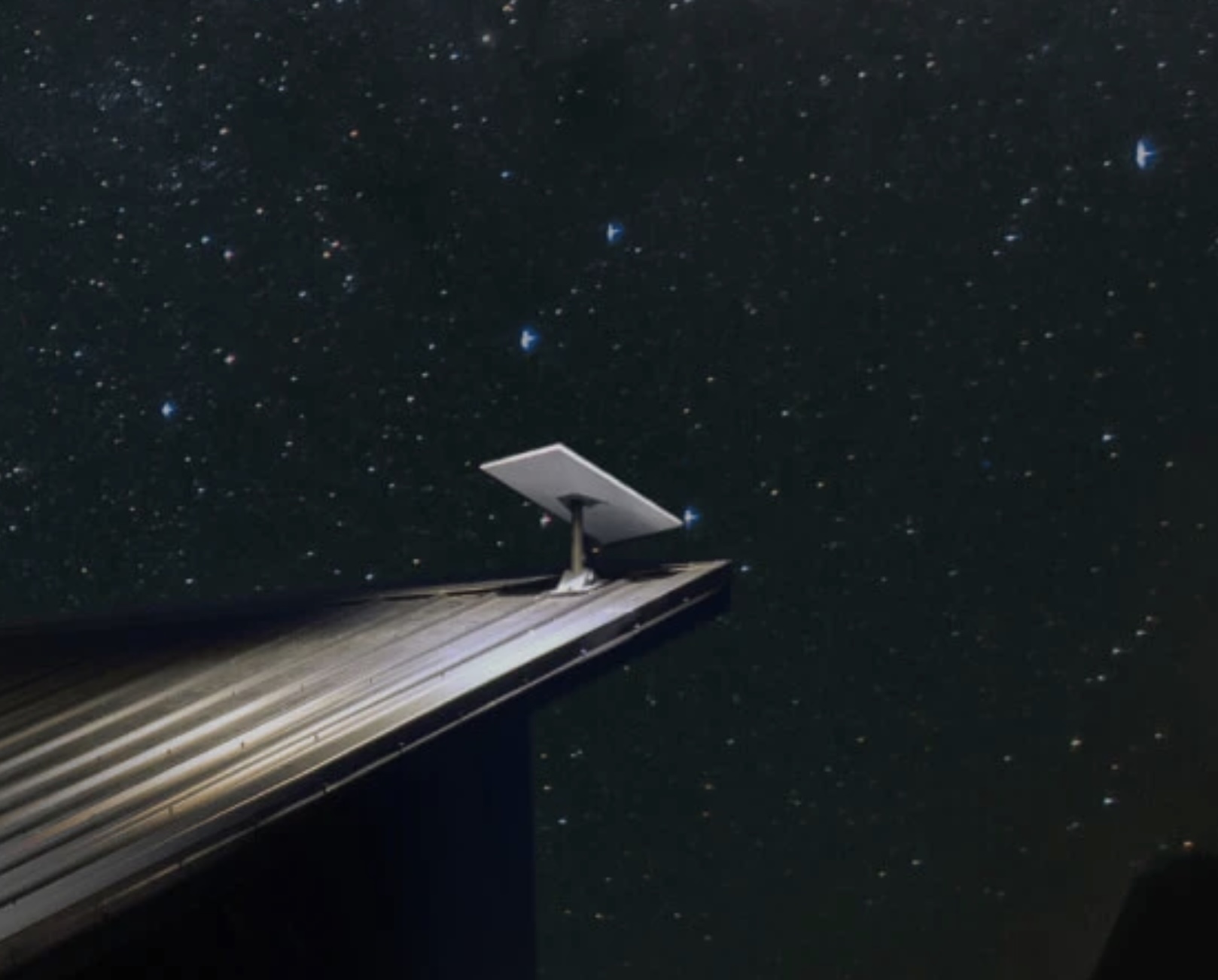
SpaceX achieved its 100th Starlink mission of the year on Friday, October 31, marking another milestone for 2025.
A Falcon 9 rocket carrying 28 Starlink broadband satellites successfully lifted off from Vandenberg Space Force Base in California at 4:41 p.m. ET, carrying another 28 Starlink satellites to Low Earth Orbit (LEO).
Falcon 9 booster’s 29th flight
Roughly 8.5 minutes after liftoff, the Falcon 9’s first stage touched down on the drone ship Of Course I Still Love You in the Pacific Ocean. This marked the booster’s 29th flight, which is approaching SpaceX’s reuse record of 31 missions.
This latest mission adds to SpaceX’s impressive 138 Falcon 9 launches in 2025, 99 of which were dedicated to Starlink, according to Space.com. The company’s focus on reusing boosters has enabled this breakneck pace, with multiple launches each week supporting both Starlink’s expansion and external customers.
Starlink’s network continues massive global expansion
Starlink remains the largest active satellite constellation in history, with more than 10,000 satellites launched, nearly 8,800 of which are currently active. SpaceX recently achieved Starlink’s 10,000-satellite milestone. With 100 Starlink missions completed for 2025, space enthusiasts have noted that SpaceX has successfully launched 2,554 Starlink satellites so far this year.
Starlink, which provides high-speed, low-latency internet connectivity even to the world’s most remote areas, has been proven to be life-changing technology for people across the globe. The service is currently operational in about 150 countries, and it currently has over 5 million subscribers worldwide. From this number, 2.7 million joined over the past year.
